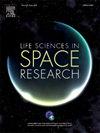简单封闭生态系统的行为;较低的营养浓度可使食草动物种群持续更长时间。
IF 2.8
3区 生物学
Q2 ASTRONOMY & ASTROPHYSICS
引用次数: 0
摘要
我们期望发展自给自足的外星殖民地,它们将接近封闭的生态系统。我们使用包含大水蚤、三种藻类和微生物的简单封闭生态系统,测试了多种条件来研究生物的长期生存,这只有在充分的营养循环下才有可能。封闭系统和开放系统在高硝酸盐浓度下表现不同;在封闭系统中,动物在第14天死亡;在开放系统中,水蚤种群持续超过273天。水蚤的死亡与藻类更大的光合作用和与大气缺乏交换导致的pH和O2增加有关。使用小水蚤的重复变异性表明,不充分的放牧能力允许藻类创造不利于水蚤生存的条件。几个月后,藻类和水蚤的丰度下降,可能是因为营养循环不足;这些种群在添加营养物质后暂时增加。天然湖泊生物的加入并没有增加系统的营养循环能力。了解封闭系统的机制将有助于在管理生命维持系统中实施生物过程。本文章由计算机程序翻译,如有差异,请以英文原文为准。
Behavior of simple closed ecological systems; lower nutrient concentrations allow longer persistence of grazer populations
We expect to develop self-sustaining extraterrestrial colonies, and they will approach being closed ecological systems. Using simple closed ecosystems containing Daphnia magna, three species of algae, and microbes, we tested multiple conditions to study long-term organism survival, which is only possible with adequate nutrient recycling. Closed and open systems behaved differently from one another at high nitrate concentrations; in closed systems, the animals were dead by day 14; in open systems, the Daphnia populations persisted beyond 273 days. Daphnia deaths were associated with increased pH and O2 caused by greater algal photosynthesis and the lack of exchange with the atmosphere. Replicate variability that used small Daphnia suggested that inadequate grazing capability allowed algae to create conditions unfavorable to Daphnia survival. Over months, algal and Daphnia abundance decreased, presumably because of inadequate nutrient recycling; these populations increased temporarily after the addition of nutrients. The addition of natural lake organisms did not increase the nutrient-recycling capabilities of the systems. Understanding the mechanisms of closed systems will be useful in implementing biological processes in managing life support systems.
求助全文
通过发布文献求助,成功后即可免费获取论文全文。
去求助
来源期刊

Life Sciences in Space Research
Agricultural and Biological Sciences-Agricultural and Biological Sciences (miscellaneous)
CiteScore
5.30
自引率
8.00%
发文量
69
期刊介绍:
Life Sciences in Space Research publishes high quality original research and review articles in areas previously covered by the Life Sciences section of COSPAR''s other society journal Advances in Space Research.
Life Sciences in Space Research features an editorial team of top scientists in the space radiation field and guarantees a fast turnaround time from submission to editorial decision.
 求助内容:
求助内容: 应助结果提醒方式:
应助结果提醒方式:


